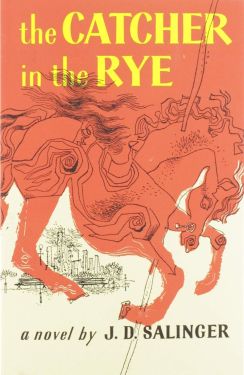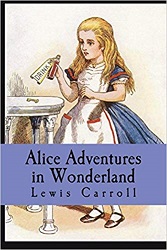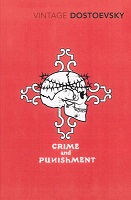The Catcher in the Rye is a postlapsarian search for connection.

What accounts for a book that has been sold over 65 million times and translated into 30 languages? When J.D. Salinger’s classic, The Catcher in the Rye, was first published to acclaim and controversy in 1951, it seized on a cultural mood. Similar to how Charles Dickens is credited with “inventing” Christmas, it can be said that Salinger gave us the teenager, popularizing a new spin on the American outlaw.
For generations, the timeless quicksilver of Holden Caulfield’s voice has blazed into the open ears and weary hearts of readers, this one included. Holden’s bewitching perspective — “if you want to know the truth” — is a flashpoint for hostile judgments that often resolve into poignant observation. His tone is grating and conspiratorial. One moment, he’s a character of cringing limitations; the next, he’s a tearful visionary.
Along with Jane Eyre and Pip from Great Expectations, Holden is one of literature’s more sensitive heroes. Perhaps it follows, then, that he lies. But at least he’s honest about it. Never rationalizing his needless fictions, Holden’s candid stance with readers makes him (interestingly enough) a reliable narrator. Likewise, when he seeks attention or acts erratically, he admits to being “crazy.” His constant calling out of phonies — friends, acquaintances, teachers — grows tiring even as we recognize he’s probably right.
When we meet 16-year-old Holden, he’s packing his bags to leave Pencey Prep, not just for the Christmas holidays but for good. Upon spotting the skates his mother recently sent him, he confides, “Almost every time someone gives me a present, it ends up making me sad.” Loneliness rather than entitlement characterizes his feelings here. The skates are the wrong style. He wanted racing skates; these are for hockey. Like all gifts, this one communicates vital information about how well the giver listens to him and understands his life.
Holden has plenty of reasons to feel “depressed,” one of a few common refrains throughout the narrative. His little brother Allie passed away from leukemia. And not so long before, Holden witnessed the suicide of a bullied classmate. Elsewhere, the specter of sexual abuse stalks the corridors: Holden’s summer love, Jane Gallagher, cries mysteriously during a game of checkers after an unexpected appearance by her stepfather. Later, Holden reminisces about Carl Luce, a student advisor who engaged younger boys in inappropriate conversations.
Most distressing is Holden’s visit to his favorite teacher, Mr. Antolini. After giving Holden a pep talk about the fruits of education, which could be construed as a creepy ode to the extracurriculars of certain Ancient Greeks, Mr. Antolini sneaks into the room where Holden is sleeping and begins touching his hair. This is the point in the story — “if you really want to know the truth” — where both Holden and the reader understand that the proverbial asylum is being run by child molesters.
Holden’s time wandering through Manhattan after his expulsion is both a coming-of-age journey and a coming-to-terms one. Having been jarred too early into adulthood, he clings to idealism, often turning callous when others fall short of his expectations. He cannot accept the banal convention that people “always clap for the wrong things.” It distresses him that class determines relationships. His phrasing here is amusing:
“The thing is, it’s really hard to be roommates with people if your suitcases are much better than theirs.”
He rejects convention, and for this, his insights are remarkable. Watching a man perform at a piano bar, Holden notes that “showing off” can diminish a person’s talent. In this, he is more profound than his wheezing history teacher, Mr. Spencer, who tells students that life is a game one learns to play.
Like the voice of a pubescent boy, Holden’s maturity crackles between psychological octaves, hitting high notes when he tightens the skates of a child and ponders the disinterested question of where the ducks from Central Park go after the pond freezes. Encountering two nuns who strike him as authentic and humble, he discusses literature with one of them and for a moment feels sheltered. His generous donation to her cause signals his belief in her goodness — goodness in general — however scant and fleeting. This, and the fact that the nun carries a basket, makes her a rather rich contender for the titular “catcher” in the story. (More on this later.)
Holden’s lows do not go unnoticed. He plays a mean trick on a friend’s mother he encounters on the train. He makes snide, condescending remarks to a woman at a bar. He tells a prostitute he had an operation on his “clavichord” and inexplicably blows smoke into the faces of the nice nuns as they are saying goodbye. Though it is winter, he soaks his head in a bathroom sink and then breaks out into the night for a stroll in Central Park.
The novel’s symbolism is striking. Holden’s red hunting hat is an emblem for his thoughts. Worn backward, it is meant to draw the attention of others while repelling them at the same time. He balks when he sees his little sister, Phoebe, wearing the hat at the end of the book, a sign she has adopted his wounded, self-destructive philosophy. Seeing it on his beloved sibling, he realizes for the first time how ridiculous it is.
Who, ultimately, is the catcher in the rye?
We know how much Holden wanted to catch James Castle, the boy who jumped to his death after being tortured by classmates. He confesses to Phoebe what he most wants in life is to catch children falling off cliffs. The types of cliffs, we can well imagine: cliffs of abuse, cliffs of grief. Parental apathy. Disillusionment. Cruelty.
Salinger’s choosing a name like “Holden” hardly needs decoding, and we know from folklore that a “caul” is a rare placental cap on the head of a newborn. Cauls were viewed variously as marks of protection or bad omens. The implied ambivalence chimes within Holden, who muses about chopping a man in the back of the head with an ax, only to admit later that he longs for everyone he has ever known, including his enemies.
The third catcher in the story is Holden’s dead brother, Allie, who in life copied poems onto his baseball mitt so he’d have something to read in the outfield. In this sense, the heart of the story might be how to cope with boredom. That, and the startled bitterness of living in an unjust world. What Holden’s time in New York teaches him is that, for better or worse, people are usually equal to the consolations they reach for.
Please share your experience reading The Catcher in the Rye in the comments below. You can join Dorothy in next reading The Brothers Karamazov, which will be the subject of her column on June 9th, 2025.

